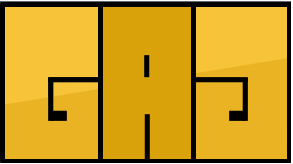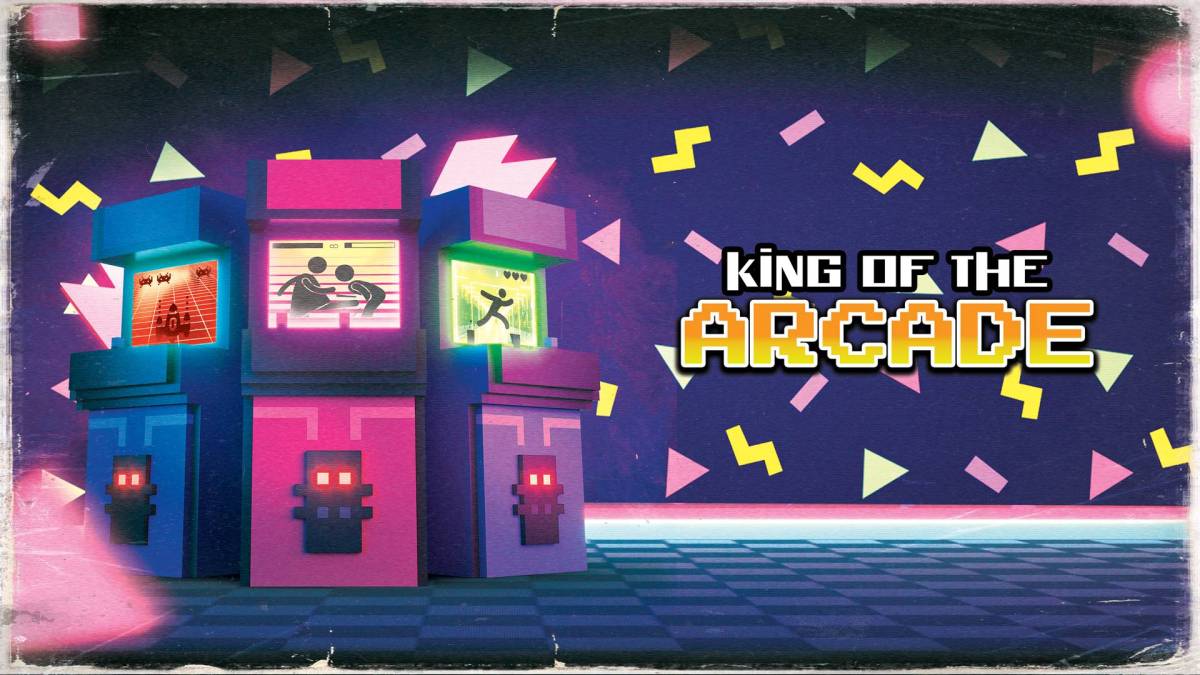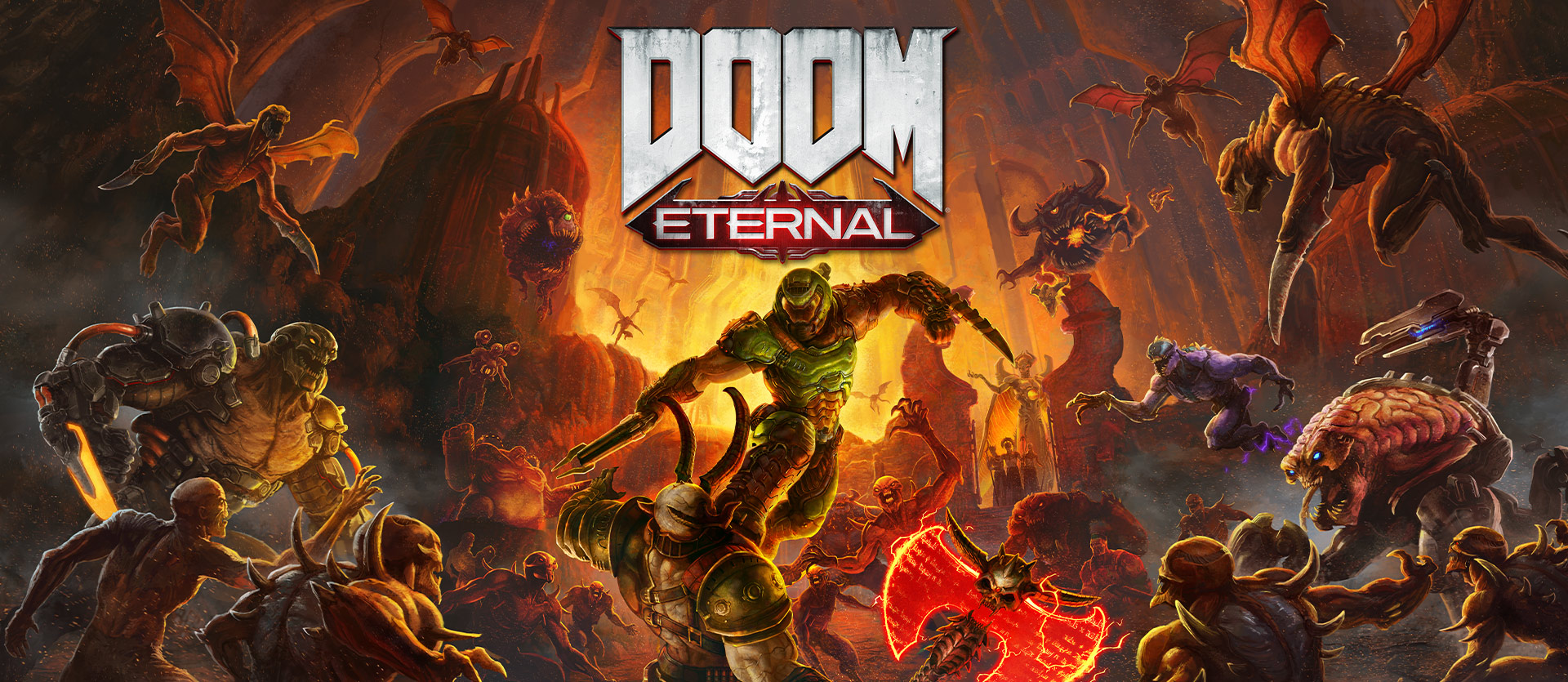
Platforms: Playstation 4, Stadia, Switch, Xbox One, and Windows (reviewed)
DOOM Eternal is a massive disappointment. Believe me, I take no pleasure in typing that, which incidentally, is a little less pleasure that I get from playing through this game’s overwrought campaign.
DOOM (2016) was that rate game that defies expectations and ends up setting the bar for years to come. To this day, no game, DOOM Eternal included, can touch iD’s sublime frag-fest. The combat in the 2016 DOOM was structured as a series of arena battles. It took the elements that made previous iD multiplayer titles hits: tiered level design, fast movement, a useful and varied arsenal of weapons, and combined them with the iconography and grammar of the prior DOOM games to create something familiar and fresh all at once.
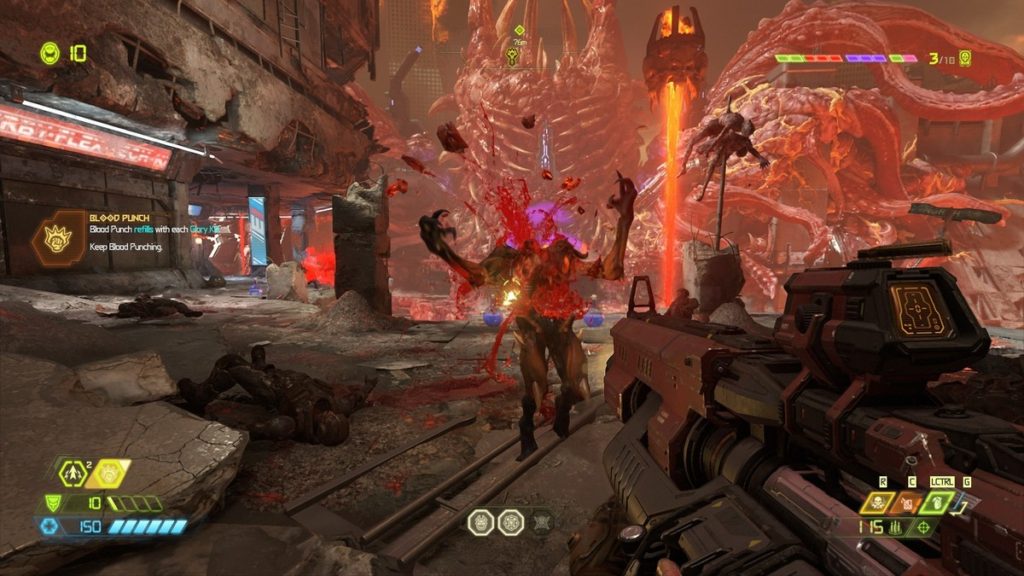
DOOM Eternal’s logo is styled in such a way to suggest that you are playing the DOOM 2 to DOOM 2016’s DOOM 1. Now, DOOM purists will tell you that the second DOOM is not the game that the first DOOM was. Damn your Super Shotgun, the original is best. Eternal hoists itself on that short-fused petard of video game sequels past the “bigger, better, more badass” attitude that only works if you can follow through on all three promises. Eternal is bigger, it is more badass (not in a good way), but it is undoubtedly, indefensibly inferior to its 2016 counterpart.
One of the best elements of DOOM 2016 was its protagonists’ disdain for video game exposition of any kind. The Doom Slayer is a man with no time for mission briefings or lengthy exposition dumps. He rips, he tears and we’re thankful for it because it’s so often the case that video games insist upon themselves, pushing tired stories and hoary lore on us again and again. Unfortunately, it seems as though iD took the wrong lessons from the successes of 2016’s DOOM.
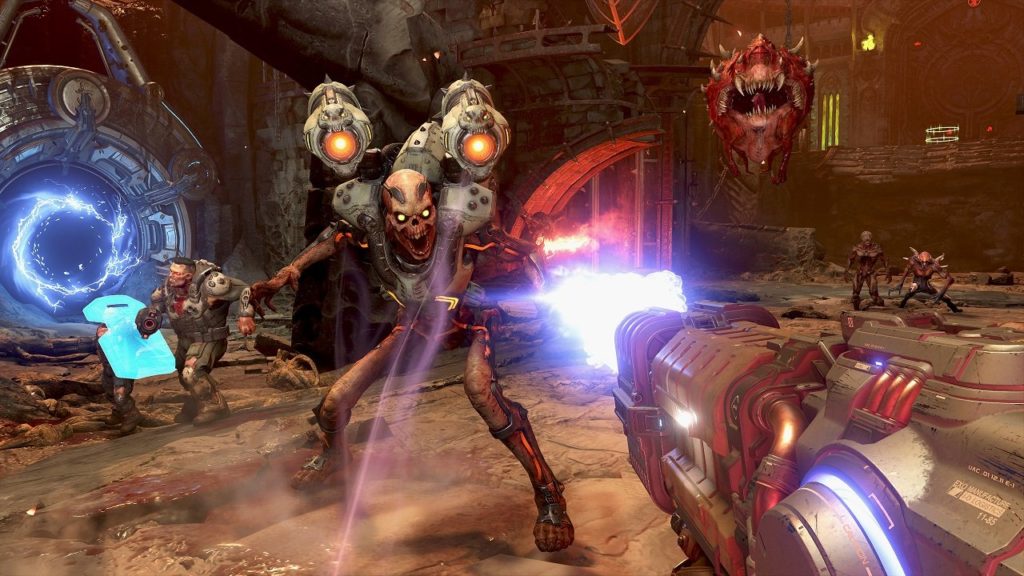
Eternal front loads its campaign with cutscenes and exposition. The first section of Eternal feels as though it features more cinema sequences than the entirety of DOOM 2016. These early missions made me feel like I’d been hoodwinked. Was this now just another guns and bureaucracy saga? Later missions dial back the story some, but the initial impression is not a good look. It speaks to the overall sense of misdirection that plagues Eternal – bigger in its verbosity but lacking in other more crucial areas.
Other changes involve an expansion of the resource and item management that played a part in the series as far back as the first game. Eternal opts to make watchful and active monitoring of your armour, health, and ammunition key to combat. This requires the player to be aware of several variables at once and engage in a bit more than shooting. As such, you pay attention to the types of enemies you’re fighting a bit more. More than that, you’ll run up against frustration when you forget that your grenade is cooling down or that your flamethrower isn’t ready to be used yet.
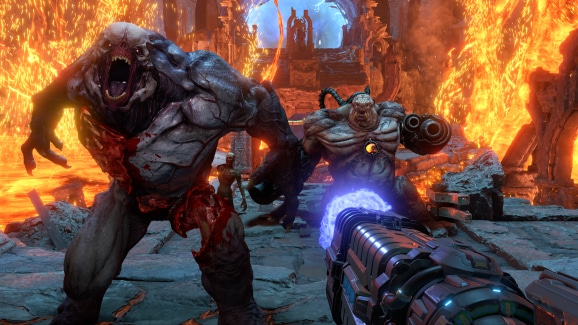
The reliance on weaker enemies as moving health packs, ammo, or armour is novel at first, but the juggling of resources tends to get in the way of the constant movement that the game’s combat scenarios demand of the player. Slayer Gates, optional encounters that test your skills, are where these systems really come together and allow you to approach the heights of earlier DOOM games. Unfortunately, these are limited in number and separated by lengthy platforming and frustrating combat sections.
There are, of course, some good aspects to DOOM Eternal. There would have to be, it’s an iD game after all. Even Rage had its bright spots. Mick Gordon’s score is excellent and is one of the “more is more” elements that really works out for the better. It’s everything you loved about DOOM 2016’s soundtrack but with more experimentation, weird and good. The game’s engine is incredibly impressive too. I do not have a decent PC by today’s standards. In fact, I’m below the game’s minimum specifications in several areas, but Eternal has no problem looking good and hitting its sixty frames target on my machine. On a decent PC and on the mid-step consoles it’s a looker and a performer.
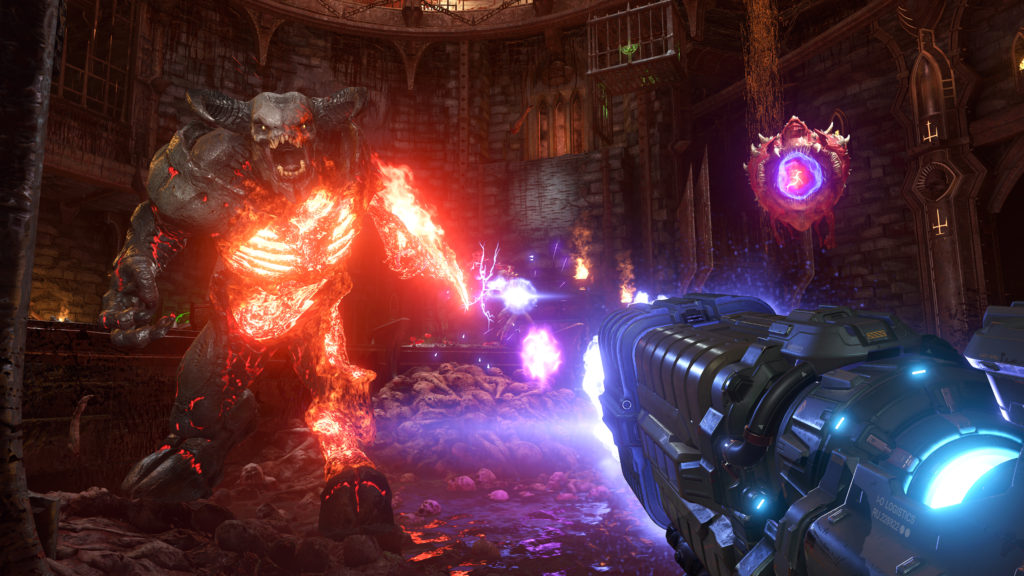
DOOM Eternal doesn’t play it safe; it tries and, in my view, fails to improve on near perfection. It’s a noble failure, but then, I wish it was a safer, more refined successor to iD’s previous game, another playthrough of which will have to fill this gaping gory void in my heart.

